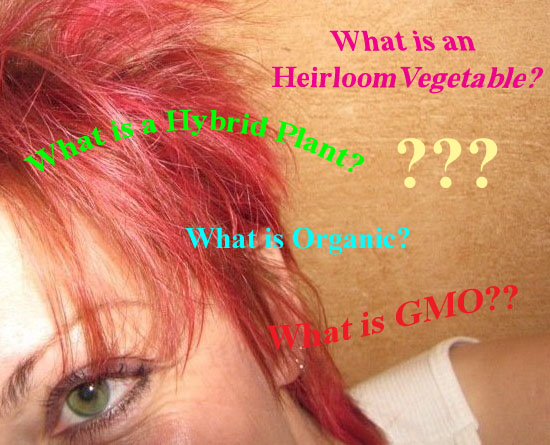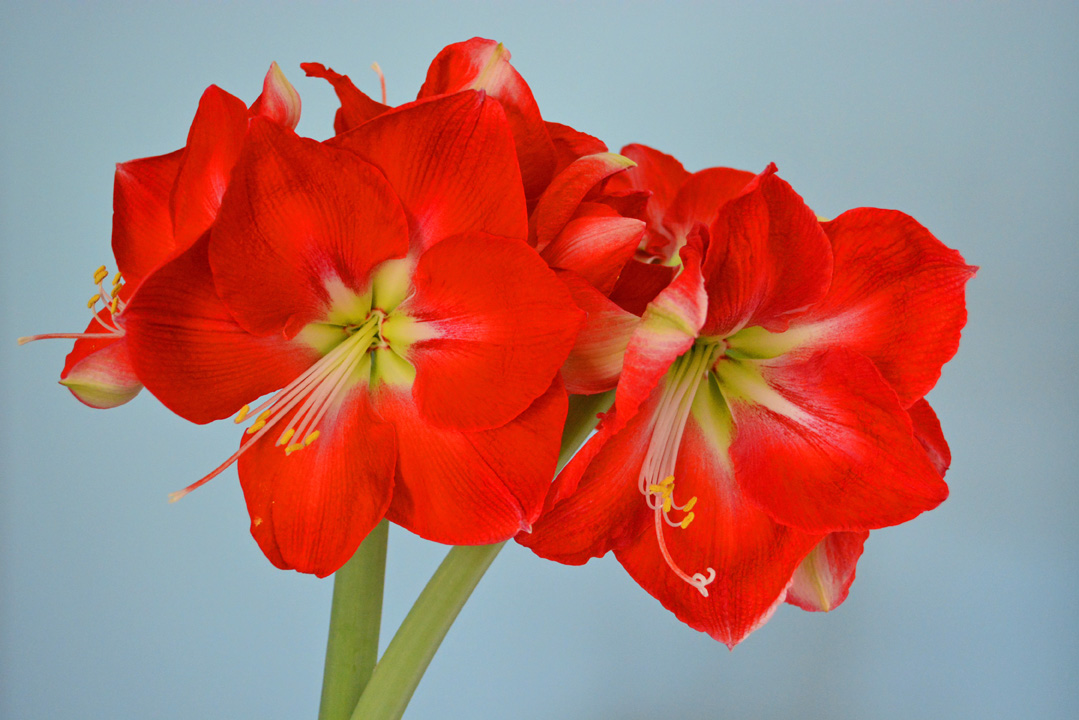What Is The Difference Between Organic, Heirloom, Hybrid, and GMO?
Sometimes the massive amount of labeling and non-GMO-labeling and plants and seeds and EVERYTHING in the green shopping market is one giant hot mess. Some mad scientist has opened up a can o’ whoopass on us throwing in a drama cocktail which has all the subtlety of a reality tv show like Hell’s Kitchen combined with the Kardashians combined with Jersey Shore with a hint of Jack Kavorkian thrown in.
Heidi Heinsen Goodin (in the photo above) recently asked me what the difference is between all of this stuff. Below is my best answer. They are not meant to be the do-all end-all to growing definitions, but instead, a reference which will give you a basic idea of the differences so you can begin to better understand the food you consume.
What is Organic?
Organic foods are produced using organic farming methods which do not have modern synthetic inputs such as chemical non-natural pesticides and chemical fertilizers. Organic foods are not processed using industrial solvents, irradiation, or chemical food additives and do not contain GMOs. Organic foods are labeled “organic” at the grocery store and on seed packets. In other words, they are free of chemical additives in any process from seed to table and are labeled as such.
What is an Heirloom Plant?
Generally speaking, an heirloom plant variety is a variety that was grown quite commonly by previous generations, but is not used in today’s large-scale modern agriculture. Most specifically, the plants must keep their traits uniformly through open pollination. Often the term ‘heirloom’ is categorized by defining age. There are varying opinions, but some say heirlooms are over 100 years old, while others say 50 years old. Most use WWII as a dateline, saying that plant varieties developed before WWII with non-hybridization techniques are considered heirlooms. Some heirloom seed varieties are labeled “heirloom” and some are not – it’s more up to you to know about the varieties on the market.
What is a Hybrid Plant?
Hybrid plants are the specific result of plant breeders who engineer new varieties of plants deliberately by combining preferred or desirable characteristics of the parent plants. Hybridizing is a labor-intensive process that can be done in the field or in a laboratory and involves selecting specific plants, then removing the pollen-bearing anthers of the female plants so that only pollen from the selected male plants can be pollinated. Pollen is then manually transferred to the female plant. New plants must be cross-pollinated one generation at a time. These plants grow to full size, then develop seeds. Those seeds will not necessarily produce plants that look like the hybrid parents, but instead, might grow a unique attributed plant. Hybrid plants are not labeled.
What is GMO?
GMO is an abbreviation for “genetically modified organisms.” GMOs are plants or animals created through the gene splicing techniques of genetic engineering or biotechnology. This is an experimental technology which merges DNA from different species, creating combinations of plant, animal, bacterial and viral genes that cannot occur in nature or in traditional crossbreeding and could be unstable.
Common Ingredients Derived from GMO Risk Crops – High-Fructose Corn Syrup, Amino Acids, Textured Vegetable Protein (TVP), Aspartame, Sodium Ascorbate, Vitamin C, Citric Acid, Ascorbic Acid, Sodium Citrate, Hydrolyzed Vegetable Protein, Lactic Acid, Ethanol, Maltodextrins, Molasses, Monosodium Glutamate, Xanthan Gum, Vitamins, Flavorings (“natural” and “artificial”), Yeast Products, and more.
What the “big deal” about GMOs right now is many people do not want to consume GMOs, but the American system of food labeling does not say that we have to be told if a product has a GMO ingredient in it or not. I think we should have truth in labeling, so I personally feel that all foods should be labeled with GMO ingredient information so I can make an educated choice about what my family is consuming.
~ ~ ~ ~ ~ ~ ~ ~ ~ ~
There you have it – the super-basic differences as I see them. Let me know your thoughts on the issues – I want to hear your opinions and ideas.






That’s a really good post Shawna, and answers questions I often hear. Thanks!
Great information, Shawna. These differences can be blurred and you have defined them well. Thanks.
I have heard your third category of “Hybrid” referred to as GE (genetically engineered).
Thanks for clearing that up.
You got it David! 🙂
Shawna
Thanks Claudia!
Thanks!
🙂 Have a good one Karen!
Shawna
Love heirlooms. I only grow them so I can collect their seeds. It is the only seed that you can make sure you get the same plant again. Anna
What is the difference between heirloom and non-hybrid seeds?
Hi David, It gets confusing, doesn’t it? The term “heirloom” is referring to the older varieties of non-hybrid seeds. Newer varieties of seeds are not heirloom.
I hope that helps! Thanks, Shawna
I’m planning a garden for this spring, and I want to save seeds year to year. My concern is getting some seed that cross pollinates and sterilizes the other cultivars (part of the GMO drama discussions). I have purchased non gmo seeds (which are heirlooms now that I read the varieties). Do you agree that purchasing organic seeds will also allow me to save seeds?
I’m I mistaken in saying that some GMO seeds, such as from certain soy plants are patented by large companies *cough (Monsanto)? These seeds may not be saved by licensed farmers, which would exponentially cut down cost if they could, unless they want to be sued by said companies. Heirloom plants also have the benefit of not falling under that category, if I remember correctly.